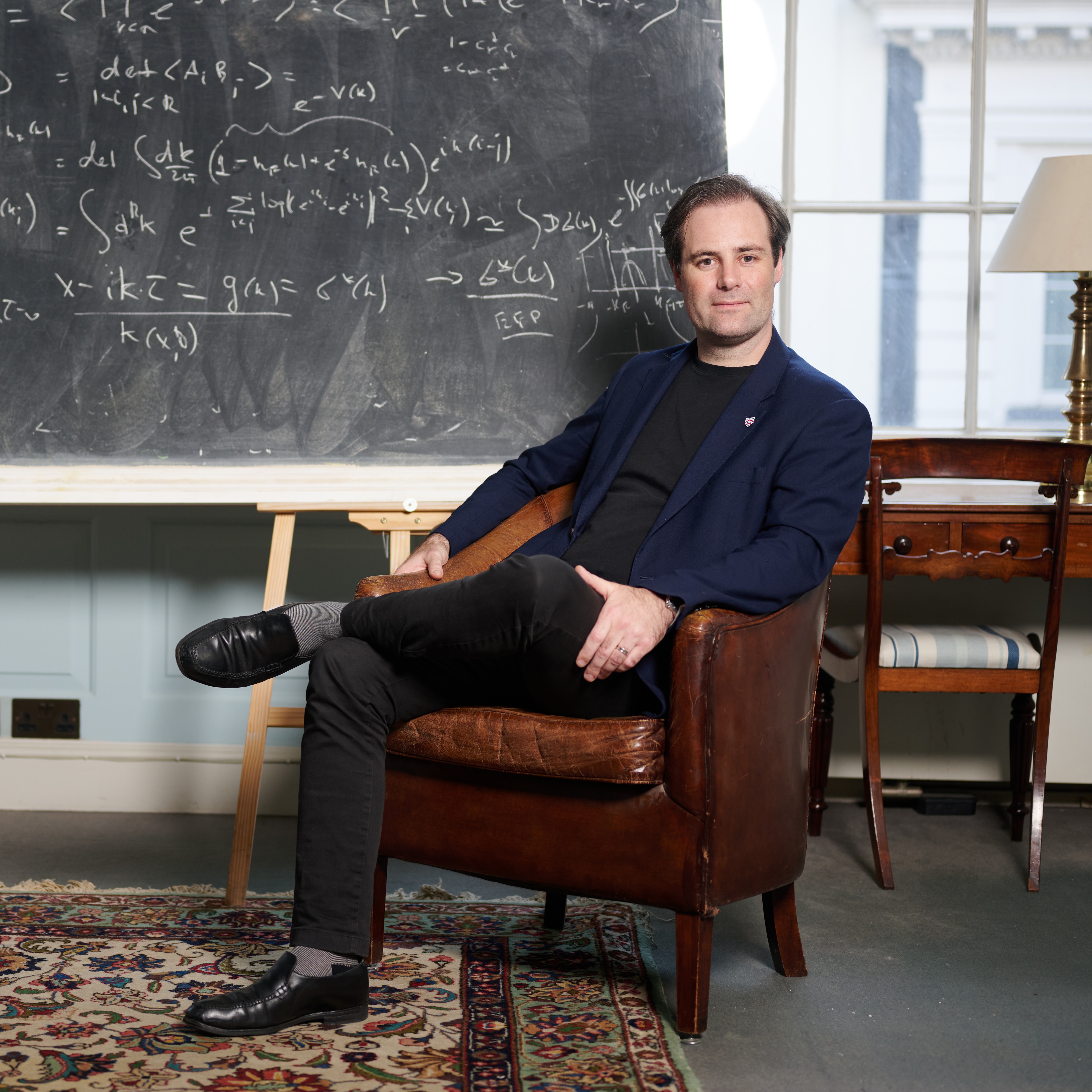Why I’m giving my money to maths
The Spectator, 3 Apr 2025
In a time of government cuts to mathematics, the entrepreneur and philanthropist Ben Delo explains why he’s funding a new Fellowship at LIMS.
When I was a teenager, mathematics saved my life. Diagnosed with Asperger’s, I had a knack for saying the wrong thing at the wrong time—usually the truth, which rarely wins popularity contests. Only in maths class did I find that the pursuit of truth was not a vice but a superpower. In a world full of grey areas and half-truths, here was a subject where things were either right or wrong, and no one could accuse you of being rude for pointing it out. My resulting passion for maths took me to Oxford, where I studied mathematics and computer science, and from there into the world of finance.
It was while I was working for a major global bank in Hong Kong, writing the high-speed trading algorithms that enable online futures markets, that the idea arose to do the same for cryptocurrencies. In 2014, with my partners Arthur Hayes and Sam Reed, I created what became the world’s largest cryptocurrencies exchange and trading platform, BitMEX. Having first saved me, maths had made me. So now I’m repaying the debt at what feels like a critical moment for this most fundamental of sciences.
Just recently, the Government has withdrawn £6m from the Academy for Mathematical Sciences and made major cuts to the national scheme to support advanced mathematics in schools. Birkbeck University has closed down its maths department, and Cardiff University is cutting up to 15 maths and physics lectureships.
The stakes could not be higher. Spotting patterns in the world around us is mankind’s greatest achievement. This is how we construct scientific principles, which are concise descriptions of patterns. Newton’s laws of motion are one example. Faraday’s principles of electromagnetism are another. These matter because, with them, we can make predictions about the future and control the world around us. What’s the universal language for describing patterns? Mathematics. When it’s applied to patterns in the real world, we call it physics. When it’s applied to patterns in our head, that’s pure maths. A physicist must be to some degree a mathematician.
The universality of mathematics means that it cuts across cultural differences. That’s no small feat at a time the world has never looked more divided. It also cuts across generations. The maths of Newton is as true now as it was in 1690. In this sense, mathematics is the ultimate truth.
To neglect it is shortsighted, not to mention a surprising move from a government that wants Britain to be a world leader in AI. The development of AI is underpinned by mathematical insight. This was vividly illustrated last year, when the Nobel Prize in Physics went to John Hopfield and Geoffrey Hinton for their work leading to the artificial neural networks which power ChatGPT.
Amid the gloom, there are a few causes for optimism. One is the work being done by the London Institute for Mathematical Sciences, which is based in the Royal Institution. With zero support from the government, and fuelled by their own initiative, this band of scientists broke away from the university system to dedicate themselves full-time to making fundamental discoveries. As Britain’s only independent research organisation in physics and maths, the London Institute does cutting-edge work in topics from statistical physics to string theory. Their blend of entrepreneurial spirit and academic excellence enables them to outpace their competitors in raising money and deploying it more efficiently toward making discoveries.
That’s why I am delighted to announce that I am funding a new named Fellowship at the London Institute. The inaugural holder of the Ben Delo Fellowship is a brilliant physicist named Juven Wang, who trained under Fields medallist Edward Witten. In the 1860s, the great British physicist James Maxwell visited Faraday at the Royal Institution to gain insights into how to unify electricity and magnetism. Today, Dr Wang continues in this vein by exploring electronuclear ultra unification. His model predicts a new fifth topological force between neutrinos and dark matter, going beyond the Standard Model. If right, his work will transform our understanding of the fundamental building blocks of the universe and what holds it—and us—together.
A few years ago, I signed the Giving Pledge to donate more than half my wealth to worthy causes. I’m not interested in art auctions or superyachts. I’m interested in backing ideas that scale—and truth should scale better than anything else. The universal language of mathematics, and its concern for immutable truth, have an inbuilt tendency to bring us together, as opposed to driving us apart. So too does its universal ambition: to push back the boundaries of our understanding. I can think of no more worthy cause.















